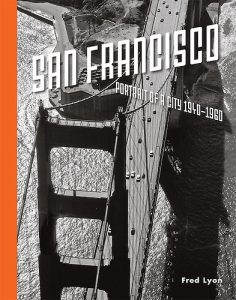| Jun 11, 2019
Summer Reading Designed to Restore the Creative Spark

By now, you may have started in on your summer reading list for beach, cabin, She-Shed or hammock. Why not a summer reading list for the office?
Yes, higher education marketers often move even faster in the summer months. All the more reason to give yourself a once-a-week moment for reflection and inspiration. This list of 10 books, curated with the help of friends who routinely write, photograph, film and illustrate, may help ignite the creative spark.
Color:
A Dictionary Of Color Combinations by Sanzo Wada
Based on Japanese fine artist Sanzo Wada’s original 6-volume work from the 1930s, this book offers 348 color combinations that remind us that great design always takes grounding from the past as it places the audience in a still developing future.
Subject:
San Francisco, Portrait of a City: 1940-1960 by Fred Lyon
Fred Lyon’s mostly post-war San Francisco study reminds us of why we love cities, especially one so compact, composed, defiantly pedestrian and residential and yet aware of its precarious geological and climatic reality. Every picture begins and completes a story.
Tempo:
Mirror by Suzy Lee
Suzy Lee’s dynamically illustrated, wordless book is part of a series (Wave, Lines, Shadow) that quiets the busy editorial mind and reminds us of the role of tempo, mood and narrative beat structure.
Aperture:
A Comedian Sees the World by Charlie Chaplin
Editor Lisa Stein Haven adds some context and insight to this collection, originally published as a set of five articles by Charlie Chaplin in Women’s Home Companion from September 1933 to January 1934. Part memoir, and part history lesson, Chaplin’s lens on the world remains relevant to anyone — students and staff — engaged with college study abroad.
Memory:
The Situation and the Story: The Art of Personal Narrative by Vivian Gornick
In an age when we perpetually mine the raw material of life (social media), Vivian Gornick walks us through great works of memoir (Edmund Gosse, Joan Didion, Oscar Wilde, James Baldwin, or Marguerite Duras) with a simple goal, to help us distinguish between the situation and the story.
Structure:
Backwards & Forwards: A Technical Manual for Reading Plays by David Ball
David Ball’s patient investigation of plot, character, theme, exposition, imagery, conflict and more may help you to rethink every aspect of the enrollment dance (online, on paper, on campus) as part of a larger craft and work.
Visualization:
Shortcut: How Analogies Reveal Connections, Spark Innovation, and Sell Our Greatest Ideas by John Pollack
Former Bill Clinton speechwriter John Pollack gives plenty of examples of analogies that clarify, as well as some that confuse and deceive, a good primer for anyone routinely charged with creating infographics, or writing “vision” pieces for a college president.
Reflection:
Consolations: The Solace, Nourishment and Underlying Meaning of Everyday Words by David Whyte
Poet David Whyte knows this borderland between language and relationship, and he uses a reflection on 52 ordinary words to remind us that we are — in our personal development and professional practice — the story we choose to tell.
Language:
Caring for Words in a Culture of Lies by Marilyn McEntyre
Remind yourself that author Marilyn McEntyre published this book in 2009, which makes her declaration that “caring for one another is not entirely separable from caring for words” all the more prescient. Our vocabulary for lifting higher education is certainly as depleted as any, and this book arrives like two charge paddles to shock us back into writing with greater purpose and verve.
Reporting:
Working: Researching, Interviewing, Writing by Robert A. Caro
For the legions of young PR, advertising and communications graduates working within your college marketing teams, Robert A. Caro might loom like a dinosaur of the highest order. But the reason most college communication fails can be traced to either a lack of reporting instinct or effort. Caro reminds us that the point of the interview is less for the reporter to learn something new, and more for the subject to reveal something to themselves that they could never before acknowledge or articulate.

